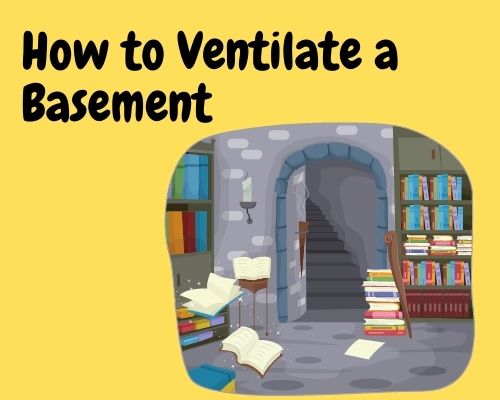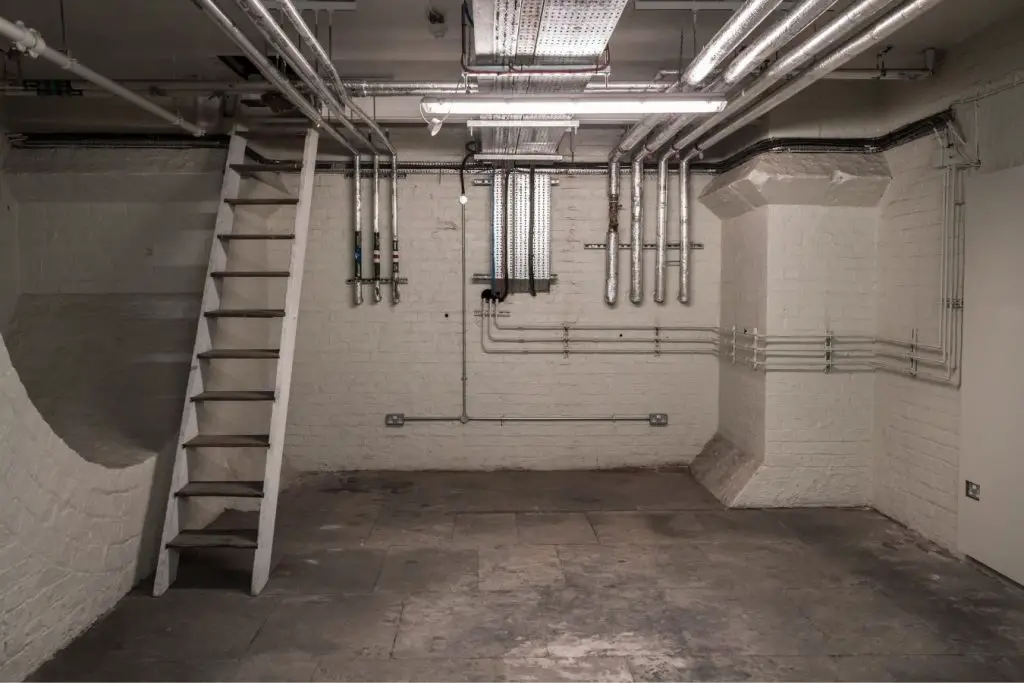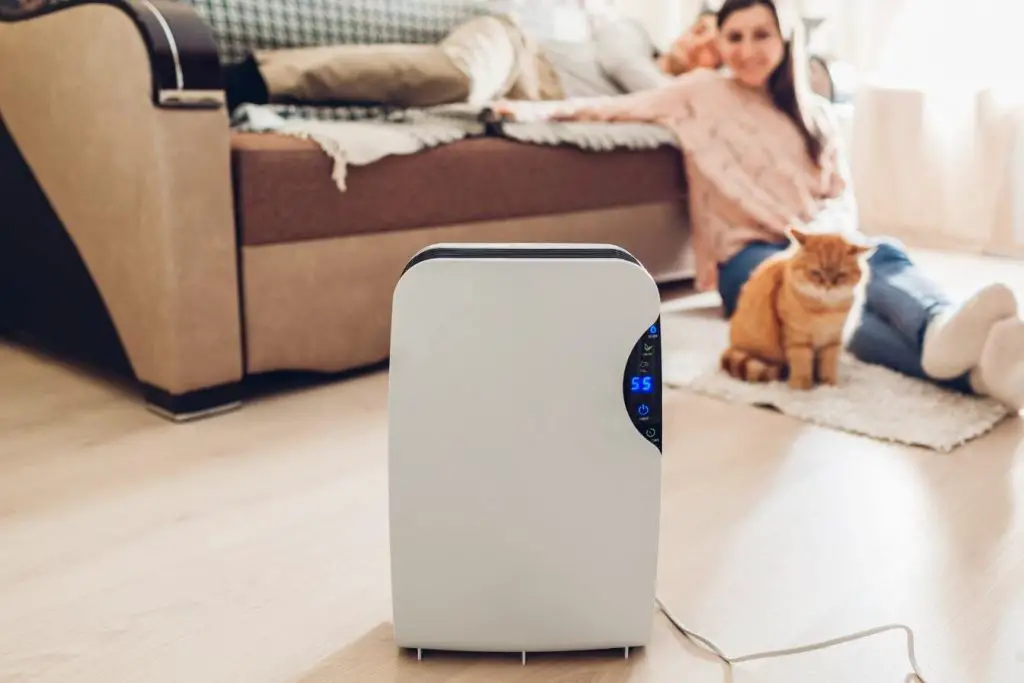At last, you have the basement you have always dreamed of. There is a space for every arcade game imaginable, you have the biggest TV you could afford, there is a nice open bar in the corner, and you have enough room for a small football team, but what about ventilation?
To ventilate a basement, you can either employ the use of air purifiers, mechanical ventilation systems (like fans and window units), or have doors or windows added as a feature to your basement for a natural ventilation system. Remove mold and mildew sources and clean what cannot be replaced.

There is nothing worse than walking into your basement and smelling the stench of mold and mildew- especially when you can work to prevent it. Whether taking preventative measures or attempting to remove the problem that already exists, it is important to take steps to ventilate any basement. Continue reading to understand why basement ventilation is important, how to tell if mold or mildew is present in your basement, how to remove it, and all the different ways to ventilate the area to keep your basement free of mold and the air fresh.
Why Is It Important to Ventilate Your Basement?
Basements, by nature, are located underground. I know, huge shocker there! Now, considering that the basement is underground, you have to account for all that happens beneath the Earth’s surface. As another non-surprise to you, beneath the Earth’s surface, there is quite a bit of difference going on within it than what is happening above in our atmosphere. The biggest difference is the amount of moisture that resides within it.
It is important to ventilate your basement since moisture and humidity are able to get into your basement way more than other locations of a home. Uncontrolled moisture levels can mean mold and mildew wreaking havoc on your property. Ventilating your basement is essential to keep this under control.
The moisture that is in the ground is great for all of our plants and trees, but it can be bad news when it comes to an improperly ventilated basement residing in it. Two words- mold and mildew- that no homeowner wants to hear, especially when they consider the impact that it can make on the health of their home as well as their family.

If mold and mildew build-up in your basement, this can lead to issues for you and others with respect to your respiratory systems, sinuses, and allergies. You may think that these things are just silent dwellers in your home, but they certainly are not. They can make a big impact on how you are able to get through your day-to-day with ease. No one wants to be constantly sneezing, reaching for an inhaler, or coughing without reprieve. This (among other reasons) is why basement ventilation is so important.
How Do You Ventilate a Basement?
Later, I will address how to have the mold removed, but once this step is done, you can get to ventilating properly in order to avoid any more mold from recurring. If you have not been one to experience mold, then ventilation is the first step in ensuring that mold does not make its way onto your walls, floors, or ceilings. Keeping air moving in your basement is a fantastic way to keep things dry and to also avoid letting the space get stale and stagnant.
To properly ventilate a basement, it is important to find the source of the mold or mildew in your home, properly remove it, and remove the source that is causing the mold buildup in the first place. Then, you will want to install air purifiers, windows, and mechanical ventilation.
As you work to install air purifiers, windows, and mechanical ventilation, you can rest assured knowing that your home is protected from an underlying (literally) destructor that can otherwise wreak havoc on your family’s cherished residence.
Let’s take a closer look at what you need to do to ventilate a basement.
Use Air Purifiers

I am going to start with the easiest and fastest solution for ventilating your basement first: portable ventilation. If you are wanting to get the job done without having to put any holes into your walls, install any overhead fans, or do some serious construction on your basement, portable ventilation is going to be your best friend. This is a quick solution that does a wonderful job keeping air moving in your basement space without it costing you a lot of time or money.
Portable ventilation systems are air purifiers that pull all that drab air in from your basement, purify it through a series of filters, and spit it back out as clean air that is free of mold and mildew spores as well as any other types of bacteria and dust. It keeps air moving, but also keeps the air clean. This then works to keep mold and mildew at bay but also keeps the air in your basement from staying still and getting stale over time.
Use Windows If Possible

This may sound insane to even say when considering a basement, but natural ventilation for a basement is possible if you have the right layout. This method is obviously going to take much more time, effort, planning, and money, but it is a surefire way to keep the air in your basement from staying still and can also be a great feature if you are wanting a bit of natural light in the area. Even more, you can even add doors in your basement to maximize airflow.
I will let you figure out the construction plans, but let’s talk about the benefits of installing windows and doors in your basement. By opening the windows and doors, you are able to naturally filter your basement air with minimal effort. This will have to be done on a regular basis to ensure that new air is being put into the basement and old air is going out. Think of this method as using Mother Nature to get pure air- she likes the recognition.
Install a Mechanical Ventilation System

Mechanical ventilation offers a few different options for keeping your basement’s air in check. The biggest thing to remember is that you not only need the air moving in your basement, but you need it to be able to either be purified or filtered out with fresh air. Mechanical ventilation takes harness of the use of fans to keep that air going within your basement but also is able to rid the air of contaminants.
You can either place a fan in front of a window to get new air into the basement, can use an exhaust fan with a ventilation pipe, or can even out a window unit into a window within your basement. The end result of any of these methods is new air in and old air out. They help to ventilate the air properly without a ton of work if you have the existing accommodations before putting them to use.
How to Tell if Mold or Mildew is in Your Basement

Now that we have talked about how to ventilate a basement, it is important to go a little more into detail about removing the culprit of your basement’s subtle destruction: mold and mildew. Without proper ventilation, mold and mildew are sure to build in your basement. To ensure the safety and structural soundness of your residence, it is important to find any mold that has grown due to improper or insufficient ventilation in your home’s most moisture-dense space.
To tell if mold or mildew is in your basement, look for discolored spots/stains (black, green, pink, etc.) in crevices, behind wallpaper, or on the wall. Inspect floorboards and carpet- especially in areas that could have been exposed to residual water. Finally, check the smell and extent of the spread.
We all have heard of black mold. It is like the most unpopular mold of molds – it needs to do some serious image changing to get on our good side. Black mold is very toxic and typically grows in damp, warm areas. If you start to think of your basement, then you will quickly realize this is the perfect spot for black mold to plant its roots. Black mold is typically very wet and very dark. Interestingly, it also is not always black. Sometimes it can be dark green or even gray.
Not all mold is as obvious as black mold though. Mold can be super sneaky and can come in many different colors and patterns. Black mold is the most obvious, but if you are not seeing any black mold, check and look for anything around your basement that looks a bit green, white, brown, or yellow. If you see these colors making an appearance on your walls or along your ceilings or baseboards, you need to get to work with some serious mold removal.
If you have wallpaper in your basement or have painted the walls, check for discolorations on the surfaces that are yellow or even pinkish. Mold can sometimes grow beneath the surface and many times, it changes the wallpaper’s color. If you see this happening with your walls, this could mean mold, which can also mean some new wallpaper. A double doozy for you. Discoloration is typically never a good sign, so keep your eyes peeled for any changes.
Besides seeing mold, there is also a dead giveaway when it comes to finding mold in your home: smell. Have you ever been into a basement that is centuries old? Ok, this could be a stretch, but even just a massive castle. Do you remember the cellar and how it smelled? It was likely very musty and very earthy smelling. It likely smelled as if you were in a natural hole in the Earth rather than within an enclosed cellar.
As most would assume, if you own a basement, it is likely that you do not want it smelling like the ground it is built within. If you walk down into your basement and notice a musty and earthy smell, a simple candle being lit likely will not solve your problem. If mold is present, it will need to be removed properly. However, after removing the mold from your basement, the most important step is to get some ventilation down there to keep mold from recurring.
Properly ventilating your basement not only works to keep mold from recurring but also works to keep mold from getting there in the first place. This is a way to be proactive in keeping your basement free and clear of any unsightly contaminants. Removing mold and mildew and ventilating your basement are key to your home’s upkeep in health and structure.
How to Remove Mold and Mildew in your Basement
This section is for those of you that only have a small amount of mold or mildew in your basement. If you are facing a major bout of mold or mildew that is built up thickly in a large area, you should leave it to a specialist to come in and take charge.
Although this may make you feel like you have to put in more work than necessary by bringing someone else in, they are much better prepared to tackle more extreme cases and can ensure that it is properly done. Along with that, hiring a professional might seem more expensive than doing the removal yourself, but it can end up saving you in the long run. Not only will the professional be able to spot the mold source more keenly, but they will already have the right tools and products on hand- something you would have to spend on otherwise.
Now that we have that out of the way, let’s get down to the nitty-gritty of mold removal. This may seem like a foreign task to tackle on your own, but I promise, it is not as difficult as you may think, and many times once you have it removed properly, you will not have to worry about mold or mildew recurring. Just take note of that last part – it has to be removed properly. Washing it off with water will not do the trick (and could even make it worse through adding moisture), so take the time to really knock it out.
To remove mold and mildew in your basement, it is important to consider the following steps:
- Remove the Source of Moisture
- Take Away Any Moldy Items
- Clean Whatever Can’t be Replaced
Let’s take a closer look.
Remove the Source of Moisture in Your Basement
Nine times out of ten, there is a source of moisture that is causing the mold or mildew in your basement and it is likely quite obvious. Leaks happen, and many times, they happen in your basement. This is the rotten truth about basements: they tend to leak and the pressure that surrounds them beneath the earth can be a big reason for this. Sometimes it is unavoidable, however, fixing most of those leaks is quick and easy with the right tools or handyman.
There can be cracks in doorways, in a pipe, or around a small window if you have one. Either way, you need to find the source of moisture that is causing the mold or mildew and get it fixed as soon as you can. Stopping the source means stopping the spread of mold and can quickly halt its progression in its tracks. If you feel like you should leave repairs to the experts, call someone in and get things patched up. Moisture will never be welcomed in a basement.
Take Away Moldy Items
Mold not only grows on walls and floors, but it can grow on items around your basement. There is nothing more bone-chilling (too much?) than opening up a stored bag of clothes and finding them completely covered in mold. They smell bad, and they look even worse. Even more, couches and other soft material items can become moldy within your basement if there is enough humidity in the air. If you find mold on items that can be removed, get them out as soon as possible.
Although it may feel like a total waste, keeping items that are riddled with mold is a bad idea. Yes, you may be able to clean the surface of a couch, however, mold goes deep and can easily still pop back up in time due to your inability to really deep clean the material. If you find some of your things having a little mold party, take that party outside and tell it that you will call the authorities if they ever come back to your house again.
On a preventative note, it is recommended to avoid keeping items made of softer materials in your basement unless you have a proper ventilation setup. This can include couches, clothes, rugs, and children’s toys. Additionally, this can even items that are made of softwood or plywood.
Clean Whatever Can’t be Replaced
So, I just said that you need to toss anything that has mold on it, but you can’t necessarily toss your walls. This is where cleaning is really going to come into play. You want to be sure to clean these areas with things that are totally disposable as to avoid spreading the spores anywhere else in your home. This means either use a disposable sponge or rag and once you are done, toss them in the trash and never look back.
To effectively clean a moldy area, you can either use a bleach solution, a commercial cleaner, or a more natural solution like baking soda or vinegar. After you have your solution, suit up and get to scrubbing. You will need to use protective gear to keep any of the mold from getting into your lungs or on your skin. Scrub away at the mold and keep yourself protected in the process.
To avoid spreading spores, throw away cleaning materials and protective gear when you are finished. This can include the clothes that you are wearing when you choose to take down the mold that has infested your basement, so choose old clothes that are durable (to protect your skin) but can be discarded once you have completed the mold removal. Do not donate these items as they will have become unsafe due to their mold exposure.
By following these steps and recommendations, you are sure to be able to ventilate your basement to prevent mold and mildew from growing. However, if you feel like the job would be better handled by a professional, then now you know that this is appropriate, and you can keep an eye out for recommended solutions along the way.

